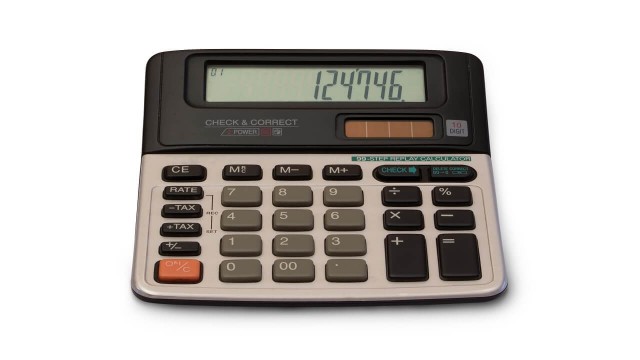
How to Calculate Cash Loan Payment
December 10, 2025, 12:45 pm
Have you ever considered taking a cash loan to meet a pressing need? Maybe you needed money to pay for your rent, buy some electronics, pay your mortgage, buy a car or to start a business…the temptations to take a cash loan are numerous.
They are numerous credit companies out there willing to give you a cash loan, companies such as Page Mf Bank, Zedvance, RenMoney etc and many loap apps ready to credit your account with loans. Unlike the traditional banks, most of these credit companies are willing to give you a cash loan as long as you have a steady income or salary and the prerequisites to qualify for their loans aren’t as complex as those of traditional banks. All these make their cash loans very attractive.

However, before taking any cash loan, there is one very important thing you must know and consider. You must know how much you are going to pay back before taking any cash loan. When you know how much you are going to pay back, you can then decide if your steady income or what you want to use the cash loan for as the capacity to pay off the loan.
This is the first thing you must consider before taking any cash loan. Even the Bible advices us to first consider the outcome of our actions before taking them:
“If one of you wanted to build a tower, wouldn’t you first sit down and calculate the cost, to determine whether you have enough money to complete it?”-Luke14:28

I want to show you how to calculate the amount you’ll pay back considering the different terms and conditions that banks and credit companies apply when giving out cash loans.
The interest rates on cash loans are normally compound interest. Compound interest or compounding means you’ll pay interest on earlier interest. It is the interest you’re charged on a cash loan that provides the increase in what you repay and makes profits for the institutions giving you a cash loan.

Calculate Cash Loan Payment
Compound interest can be calculated in 3 ways:
Interest is per annum and payable at the end of the year (once a year)
The formula for calculating the repayment in this arrangement is
A = P (1+r )n
Where A is the future sum to be repaid
P is the principal or amount borrowed
r is the interest rate on the loan
n is the period or duration of the loan
To illustrate this, let’s use an example.
Mr. John borrows N100,000 from a bank for 4 years at an annual interest rate of 10%. What is the future amount he’ll repay?
Going by the formula above, P = N 100,000; r = 10% or 0.1; n = 4
A = N100,000 (1 + 0.1)4
A = N 146,410; this is the amount Mr. John will repay.
Interest paid on the N 100,000 cash loan is N 46,410 (N 146,410 – N 100,000)
Interest is per annum but payable other than annually (more than once per year) i.e. biannually or quarterly
The formula for this arrangement is
A = P (1+[r/m] )nm
Where m is the number of times the interest will be charged per year
Another example will be used to illustrate how this is calculated:
Mr. John borrows N 100,000 from a bank for 4 years. The interest rate is 10% per annum. What will be the amount he repays if:
- The interest is charged half-yearly (twice a year)
- The interest is charged quarterly (four times a year)
For interest charged half-yearly, where P = N100,000; r = 10% or 0.1; n = 4; m = 2
Amount to be repaid (A) = N100,000 (1 + [0.1/2])4×2
= N 147,745
The interest to be repaid in this case is N 47,745 (i.e. N 147,745 – N 100,000)
For interest charged quarterly, in this case m = 4
Amount to be repaid (A) = N 100,000 (1+[0.1/4])4×4
= N 148,845
The interest to be repaid in this case is N 48,845 (i.e. N 148,845 – N 100,000)
Where interest is charged at a rate other than per annum i.e. per month
The formula for this arrangement is
A = P (1 + r )nm ; where m is the number of months in 1 year
So, if Mr. John borrows N 100,000 from a bank for 4 years and his cash loan is to attract 1% per
month. How much will he repay?
P = N100,000; r= 10% or 0.1; n=4; m=12
Amount to be repaid (A) = N 100,000 (1+0.1)4×12
= N 161,222
The interest to be repaid in this case is N 61,222 (i.e. N 161,222 – N 100,000)
Also, the bank or credit company will charge you a one-off management fee for giving you the cash loan. This charge is calculated in simple interest i.e. you only pay interest on the amount you want to borrow. So from our example above, if the credit company charges Mr. John a management fee of 3% for the N 100,000 he borrows, he pays an extra management fee of:
Management fee = 3% X N100,000
= 0.03 X N 100,000
= N 3,000
In addition to the compound interest he’ll pay back on the actual cash loan (i.e. N 100,000) he’ll also pay back N 3,000 as management fee. This amount is normally paid once at the outset of the cash loan.
Go over the examples again and use it to calculate the amount you are going to repay if you’re thinking of taking a cash loan from a credit company or bank. Knowing how much interest you'll pay back on a cash loan is a very important skillset for managing and investing your money.












Share This Article: